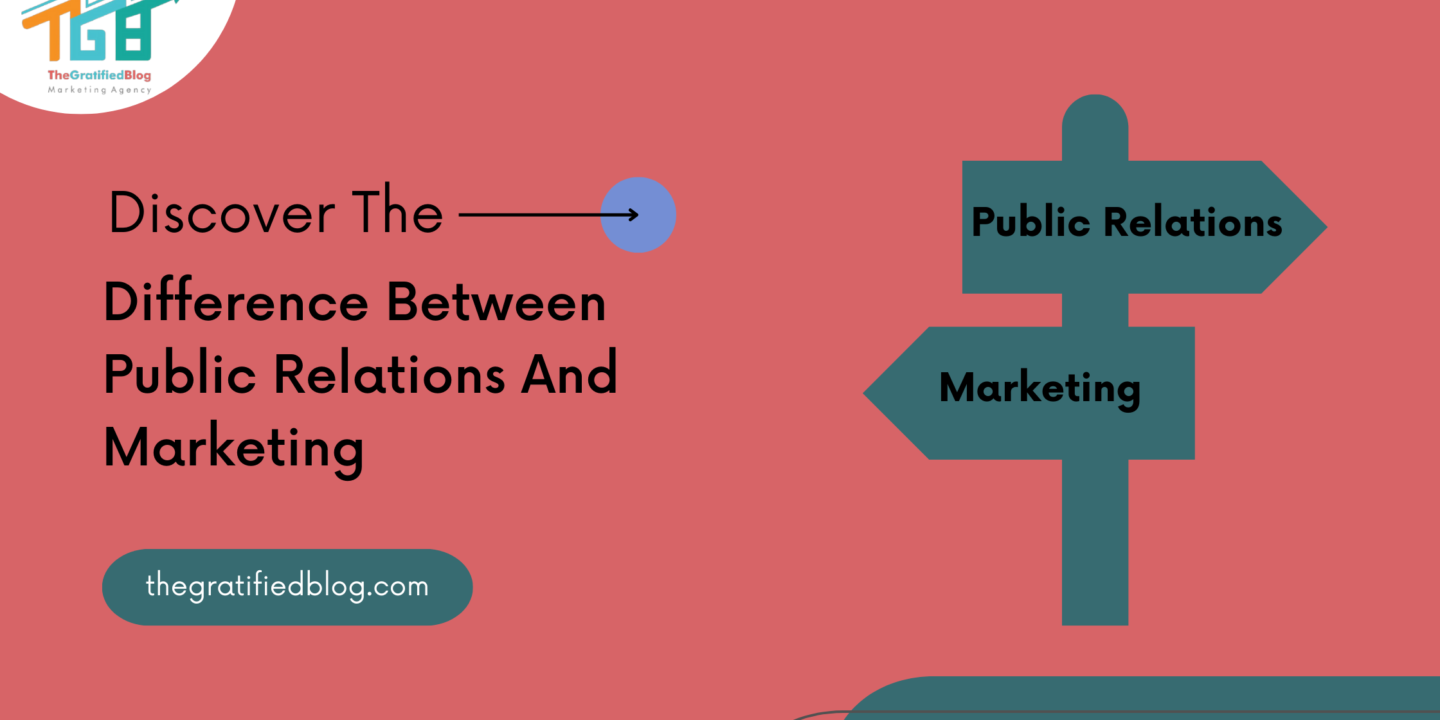
Understanding the fundamental difference between public relations and marketing is crucial for success in business and communication. While both disciplines aim to promote and enhance an organisation’s image, they serve distinct purposes and employ different strategies to achieve their goals.
This blog will explore the nuanced disparities between public relations and marketing, exploring their respective roles, objectives, and tactics. By gaining a deeper insight into these two essential functions, businesses can effectively leverage their strengths and maximise their impact in the competitive landscape.
Join us as we unravel the intricacies of the difference between public relations and marketing and uncover the symbiotic relationship between these indispensable components of modern-day communication.
So, let’s get started by understanding their definitions:
Understanding Public Relations And Marketing
What Is Public Relations?
Public relations (PR) entails strategic communication practices focusing on establishing and sustaining mutually advantageous relationships among an organisation and its stakeholders.
These stakeholders include customers, employees, investors, media outlets, government agencies, and the general public.
Now, let’s understand what marketing is.
What’s Marketing?
Marketing is a strategic business function that involves Recognizing, foreseeing, and fulfilling customer needs and desires through creating, promoting, and distributing products or services.
Marketing is about connecting with target audiences to generate demand and drive profitable customer action. It encompasses various activities, including market research, product development, pricing, distribution, advertising, and promotional campaigns.
Having laid the groundwork for a fundamental comprehension of both public relations and marketing, let’s delve deeper into the difference between public relations and marketing
Critical Difference Between Public Relations And Marketing

Focus and Target Audience:
- PR: Relationship-building with stakeholders
Public relations primarily focuses on cultivating and preserving favourable relationships with diverse stakeholders, encompassing the media, investors, employees, customers, government agencies, and the general public. PR professionals work to foster trust, credibility, and goodwill by engaging in strategic communication efforts, such as media relations, community outreach, and corporate social responsibility initiatives. The target audience for PR is broad and encompasses all stakeholders who have a vested interest in the organization’s reputation and success.
- Marketing: Promoting products/services to target customers
Conversely, marketing focuses on promoting and selling products or services to target customers. It entails recognizing and comprehending the target audience segments’ needs, preferences, and behaviors and developing marketing strategies to reach and persuade them to purchase the organization’s offerings. Marketing tactics such as advertising, sales promotions, and direct marketing create awareness, generate interest, and drive purchase decisions among target customers.
Goals and Objectives:
- PR: Enhancing reputation and goodwill
The primary goal of public relations is to enhance the organisation’s reputation and goodwill among its stakeholders. PR efforts aim to shape public perception, manage crises, and build trust and credibility through transparent and authentic communication.
- Marketing: Driving sales and revenue
In contrast, the primary objective of marketing aims to propel sales and revenue expansion for the organization. Marketing activities aim to attract potential customers, persuade them to purchase the organization’s products or services and generate revenue. Marketing strategies focus on creating value propositions, differentiating the organisation’s offerings from competitors, and effectively communicating the benefits of its products or services to target customers to drive purchase decisions.
Strategies and Tactics:
- PR: Media relations, crisis management, event planning
Public relations employs various strategies and tactics to achieve its objectives, including media relations, crisis management, event planning, and corporate communications. PR professionals proactively engage with the media to secure positive coverage and manage relationships with journalists and influencers. In times of crisis, PR is critical in managing communication to mitigate negative publicity and protect the organisation’s reputation. Additionally, PR may organise events, sponsorships, and community outreach programs to engage stakeholders and enhance the organization’s visibility and reputation.
- Marketing: Advertising, market research, branding
Marketing utilises a range of strategies and tactics to promote the organization’s products or services and drive sales. These may include advertising campaigns, market research to understand customer needs and preferences, branding initiatives to establish a distinctive identity and position in the marketplace, and product development to meet customer demands. Marketing also encompasses pricing strategies, distribution channels, and promotional activities to create awareness, stimulate demand, and influence purchase decisions among target customers.
Measurement of Success:
- PR: Qualitative measures such as brand sentiment and reputation
Public relations typically relies on qualitative measures to evaluate its success, including brand sentiment, reputation, and perception among stakeholders. PR professionals monitor media coverage, conduct surveys, and analyze social media conversations to gauge public sentiment and evaluate the efficacy of PR campaigns in enhancing the organization’s reputation and goodwill.
- Marketing: Quantitative measures like ROI and sales figures
In contrast, marketing often employs quantitative measures to measure success, such as return on investment (ROI), sales figures, market share, and customer acquisition and retention rates. Marketing analytics tools track key performance indicators (KPIs) to measure the influence of marketing campaigns on driving sales and revenue, as well as the effectiveness of various marketing channels and tactics in reaching and engaging target customers.
While public relations and marketing aim to promote and enhance the organisation’s image and success, they employ different approaches, strategies, and metrics to achieve their objectives. Understanding the distinctions between PR and marketing is essential for organisations to develop integrated communication strategies that effectively engage stakeholders and drive business growth.
FAQs
Q1. What is the primary difference between public relations and marketing?
Answer: Public relations (PR) focuses on managing relationships and reputation with various stakeholders, while marketing centers around promoting products or services to target customers.
Q2. How do the goals of public relations differ from those of marketing?
Answer: Public relations aims to enhance reputation and goodwill, while marketing is primarily focused on driving sales and revenue growth for the organization.
Conclusion
Here are the distinctions between public relations and marketing. Implementing these differences effectively can yield significant results for your business. Remember that each requires unique strategies, so be sure to tailor your approach accordingly.
If you still have any questions related to the blog, please leave them in the comment section. We are pleased to address any inquiries you may have.
Thanks for reading 🙂








No Comments